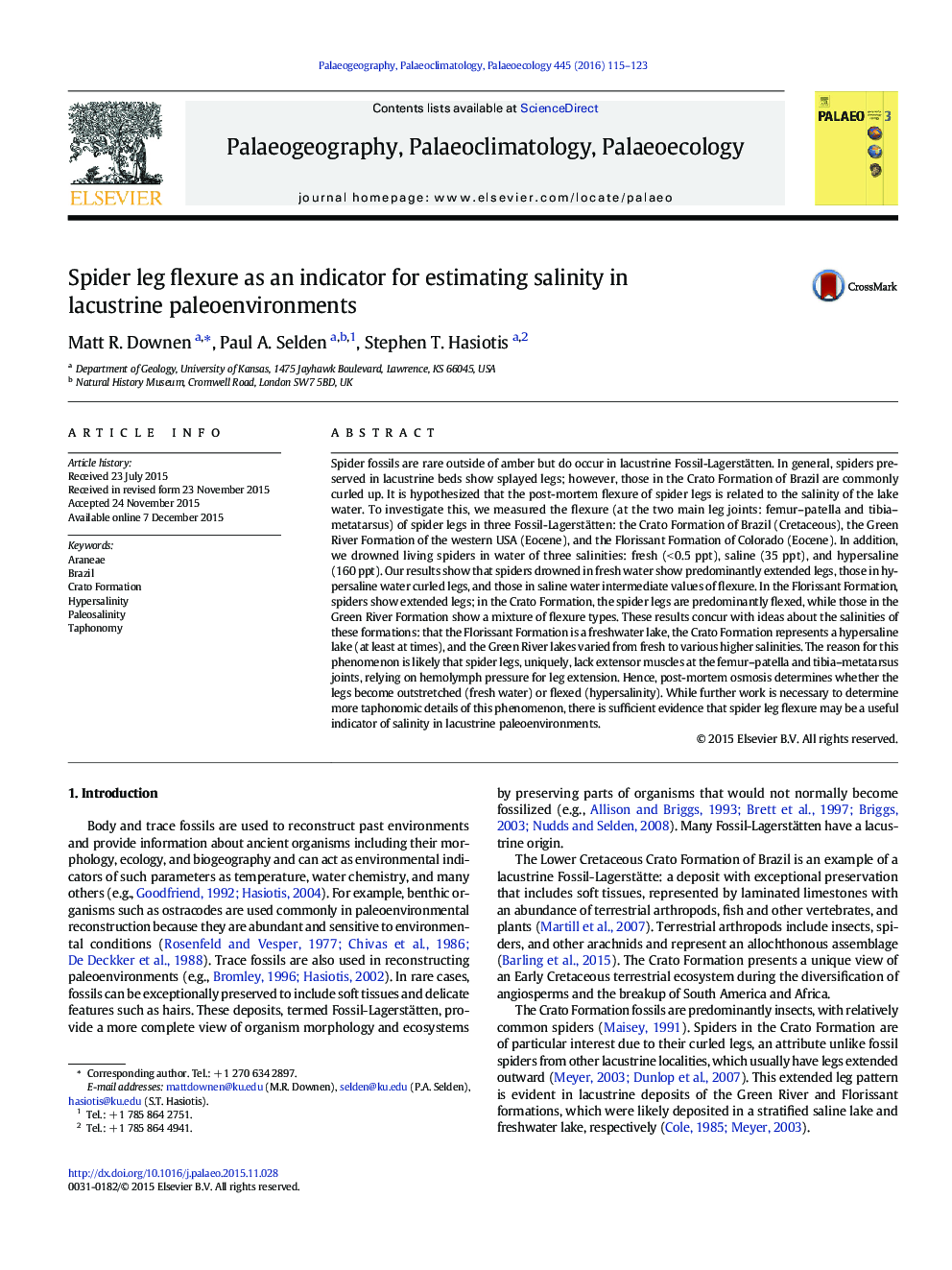| Article ID | Journal | Published Year | Pages | File Type |
|---|---|---|---|---|
| 4465811 | Palaeogeography, Palaeoclimatology, Palaeoecology | 2016 | 9 Pages |
•The leg flexures of fossil spiders from different localities were compared.•Crato Formation spiders have tightly curled legs unlike other lacustrine deposits.•Modern spiders were drowned in fresh, saline, and hypersaline solutions.•The legs of post-mortem spiders become increasingly curled in higher salinities.•Fossil spider leg flexure is indicative of paleosalinity in lacustrine deposits.
Spider fossils are rare outside of amber but do occur in lacustrine Fossil-Lagerstätten. In general, spiders preserved in lacustrine beds show splayed legs; however, those in the Crato Formation of Brazil are commonly curled up. It is hypothesized that the post-mortem flexure of spider legs is related to the salinity of the lake water. To investigate this, we measured the flexure (at the two main leg joints: femur–patella and tibia–metatarsus) of spider legs in three Fossil-Lagerstätten: the Crato Formation of Brazil (Cretaceous), the Green River Formation of the western USA (Eocene), and the Florissant Formation of Colorado (Eocene). In addition, we drowned living spiders in water of three salinities: fresh (< 0.5 ppt), saline (35 ppt), and hypersaline (160 ppt). Our results show that spiders drowned in fresh water show predominantly extended legs, those in hypersaline water curled legs, and those in saline water intermediate values of flexure. In the Florissant Formation, spiders show extended legs; in the Crato Formation, the spider legs are predominantly flexed, while those in the Green River Formation show a mixture of flexure types. These results concur with ideas about the salinities of these formations: that the Florissant Formation is a freshwater lake, the Crato Formation represents a hypersaline lake (at least at times), and the Green River lakes varied from fresh to various higher salinities. The reason for this phenomenon is likely that spider legs, uniquely, lack extensor muscles at the femur–patella and tibia–metatarsus joints, relying on hemolymph pressure for leg extension. Hence, post-mortem osmosis determines whether the legs become outstretched (fresh water) or flexed (hypersalinity). While further work is necessary to determine more taphonomic details of this phenomenon, there is sufficient evidence that spider leg flexure may be a useful indicator of salinity in lacustrine paleoenvironments.
